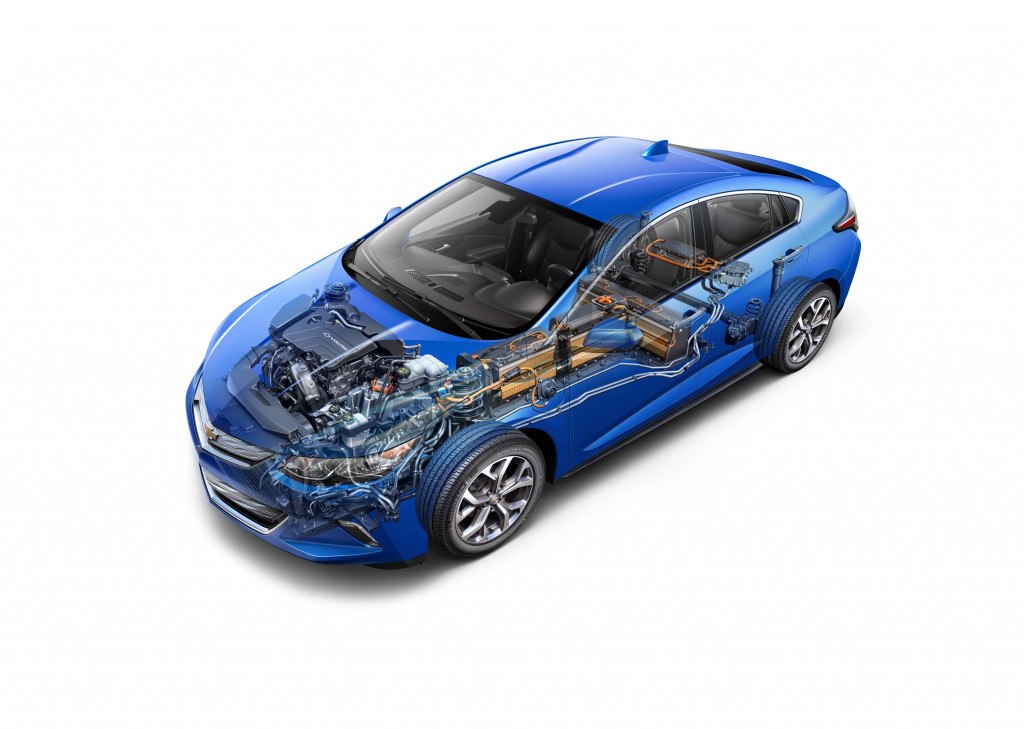Will the Chevrolet Volt get an immediate successor, or will any other model soon carry on with the potential of its brilliant Voltec plug-in hybrid system?
Considering what General Motors announced yesterday, both of those possibilities are now looking less likely.
GM said that it will cut 50 jobs at the Brownstown facility that assembled battery packs for the Volt, as well as a few other models, including the Buick LaCrosse and its eAssist system.
DON'T MISS: What will happen now that the Chevy Volt has been discontinued? Twitter poll results
This news comes in addition to GM’s previously announced plant closings and layoffs, which include the closure of five plants and the layoffs of 15,000 workers. One of those slated for closure is GM’s nearby Detroit-Hamtramck plant, where the Volt is assembled.

2019 Chevrolet Volt
GM had previously suggested that the Volt would be succeeded by a crossover utility vehicle, using the Volt’s Voltec plug-in hybrid system, after the current Volt finished its run around 2020. But with the Volt unceremoniously cut from the lineup as part of massive GM cuts and closings announced late last month, it’s looking a lot less likely.
It’s probably no coincidence that the Volt will go out of production on March 1, 2019, a month before GM’s per-vehicle amount for the federal EV tax credit (Volt included) drops from its present $7,500 to $3,750. With that rule sunsetting, GM no longer has the incentive to produce plug-in hybrids with rather large 16-kwh battery packs (the current version has an 18.4-kwh battery), and it’s likely that the expensive-to-assemble Volt will be eclipsed by new fully electric vehicles from GM.
CHECK OUT: Electric cars "not going to work," Trump says of GM's plan
It’s an odd juxtaposition of funding and priorities. GM invested $449 million toward upgrading Hamtramck and Brownstown in 2014 for the current generation of the Volt, and Brownstown itself was made possible, in 2010, with American Recovery and Reinvestment Act funding through the U.S. Department of Energy (DOE), as a facility for the assembly of lithium-ion battery packs.
“We issued a WARN [Worker Adjustment and Retraining Notification Act] letter for Brownstown that indicated that 37 hourly employees and 13 salaried employees would go on layoff with the end of Volt production,” confirmed Kim Carpenter, a GM spokeswoman for manufacturing and labor, to Green Car Reports. The plant will remain open and “will continue to support other business,” added Carpenter, who said that there are currently 110 GM employees at Brownstown.
READ MORE: GM to kill Chevy Volt production in 2019 (Updated)
Those businesses are likely to include GM’s joint ventures with Honda, including development of battery cells and modules, fuel-cell development, and plans to assemble next-generation fuel-cell stacks for both automakers at Brownstown.

Battery pack assembly for 2015 Chevrolet Spark EV electric car at GM's Brownstown, Michigan, plant
GM confirmed that no Honda employees work at the facility itself, so It’s likely that many of the 60 GM employees that remain stationed at Brownstown are part of those efforts.
One possible explanation for this closure is that GM simply decided to cut its losses and outsource the battery for any future iteration of the Volt and its drive system to LG Chem, which has been involved in the Volt’s battery all along and now assembles packs for the Chevy Bolt EV in a Michigan facility of its own. So it’s far too early to write an obituary for the Volt or to strike out the possibility of a Voltec crossover.













